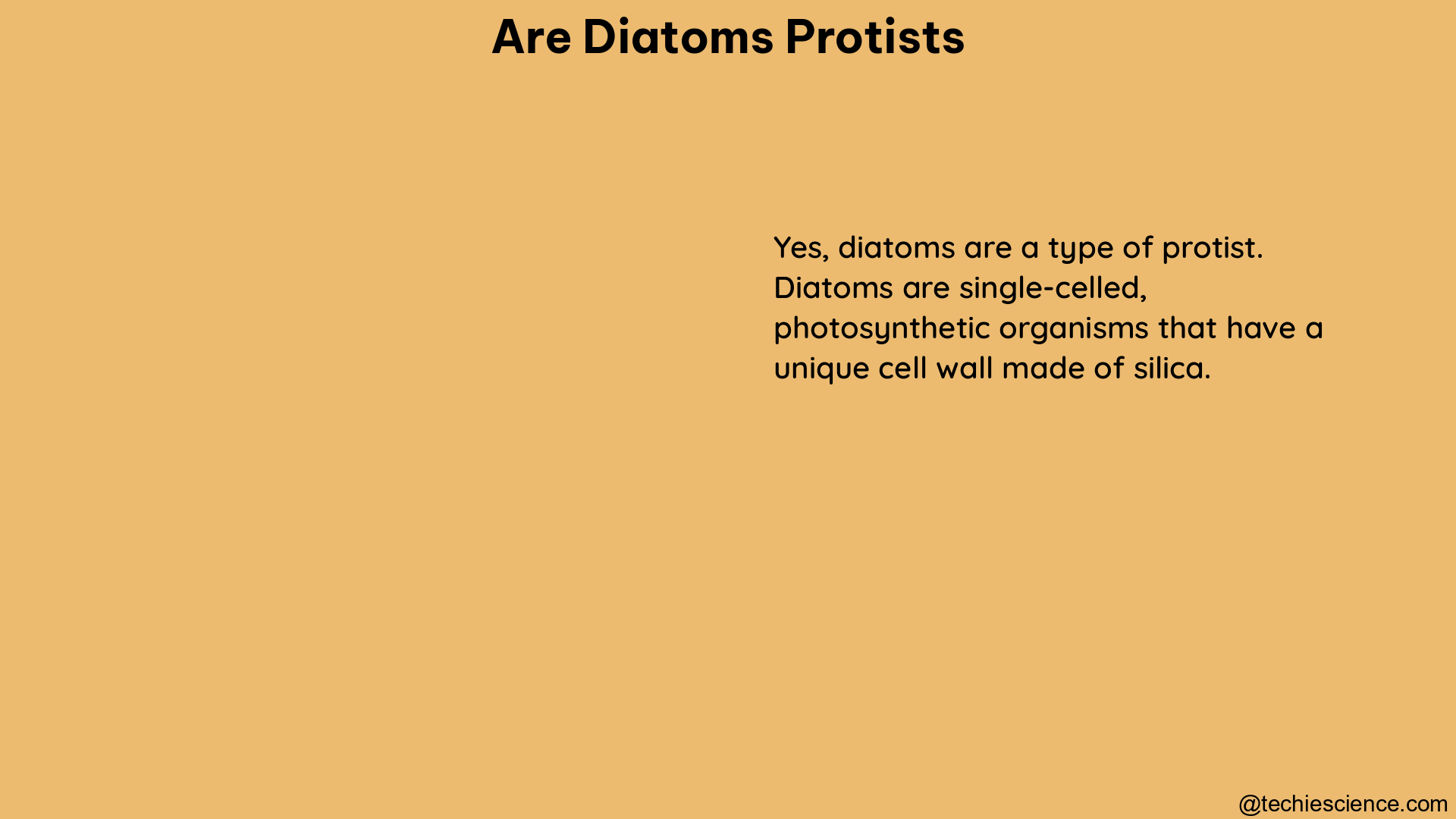Diatoms are a remarkable group of protists that play a crucial role in the Earth’s ecosystem. These unicellular organisms are responsible for producing a significant portion of the world’s oxygen, contributing to approximately 20-50% of the total oxygen production. Additionally, diatoms are known to consume an astounding 6.7 billion tonnes of silicon each year, making them a vital component of the global silicon cycle.
The Significance of Diatoms
Diatoms are not only essential for oxygen production but also play a crucial role in the ocean’s food web. They are responsible for nearly half of the organic material found in the oceans, serving as a primary food source for a wide range of marine organisms. Furthermore, the shells of diatoms, known as frustules, can accumulate up to a half-mile deep on the ocean floor, creating a vast repository of information about past environmental conditions.
Diatom Characteristics and Diversity

Diatoms are unicellular organisms that can exist as solitary cells or in colonies. Their size range is remarkably diverse, with individual cells ranging from 2 to 2000 micrometers in diameter. Diatoms exhibit a distinct shape, with some species being radially symmetric (centric diatoms) and most being broadly bilaterally symmetric (pennate diatoms).
One of the most remarkable features of diatoms is their unique cell wall, which is made of silica and is called a frustule. This frustule is responsible for the structural coloration and the “jewels of the sea” and “living opals” descriptions often associated with diatoms. The frustule is composed of two overlapping parts, the epitheca and the hypotheca, which fit together like a Petri dish.
Diatoms can move, primarily through passive means, such as ocean currents and wind-induced water turbulence. However, the male gametes of centric diatoms possess flagella, allowing them to actively move.
Reproduction and Classification
Diatoms reproduce through both cell division and sexual reproduction via gametes. Smaller diatoms are formed through cell division, while larger diatoms are produced through a sexual process called auxospore formation.
Taxonomically, diatoms are classified as stramenopile (or heterokont) protists, belonging to a larger group of protists that often contain plastids rich in chlorophylls a and c. It is estimated that there are around 20,000 extant diatom species, with approximately 12,000 having been named to date.
The classification of diatoms can vary, with some being classified as a class (Diatomophyceae or Bacillariophyceae) and others as a division (Bacillariophyta). This variation in classification reflects the ongoing debate and research within the scientific community regarding the precise taxonomic placement of diatoms.
Diatom Habitats and Significance
Diatoms are found in a wide range of habitats, including freshwater, saltwater, moist soil, and even in mosses. Their ubiquity and abundance make them a subject of interest for both amateur microscopists and researchers alike, who study them for their beauty, scientific significance, and potential applications.
One of the most fascinating aspects of diatoms is their ability to serve as indicators of past environmental conditions. The silica frustules of diatoms can be preserved in sediments, providing a valuable record of past climate, water quality, and other environmental factors. This information is crucial for understanding the Earth’s history and predicting future environmental changes.
Conclusion
In summary, diatoms are a remarkable group of protists that play a vital role in the Earth’s ecosystem. Their contribution to oxygen production, the global silicon cycle, and the ocean’s food web is truly remarkable. The diversity, unique characteristics, and scientific significance of diatoms make them a fascinating subject of study for biologists, ecologists, and anyone interested in the natural world.
References:
- Diatoms as a Source of Renewable Oils
- Wikipedia – Diatom
- Diatoms in the Ocean
- Diatoms: Nature’s Jewels Viewed with a Microscope
- The Ecological Importance of Diatoms

Hi, I am Saif Ali. I obtained my Master’s degree in Microbiology and have one year of research experience in water microbiology from National Institute of Hydrology, Roorkee. Antibiotic resistant microorganisms and soil bacteria, particularly PGPR, are my areas of interest and expertise. Currently, I’m focused on developing antibiotic alternatives. I’m always trying to discover new things from my surroundings. My goal is to provide readers with easy-to-understand microbiology articles.
If you have a bug, treat it with caution and avoid using antibiotics to combat SUPERBUGS.
Let’s connect via LinkedIn: